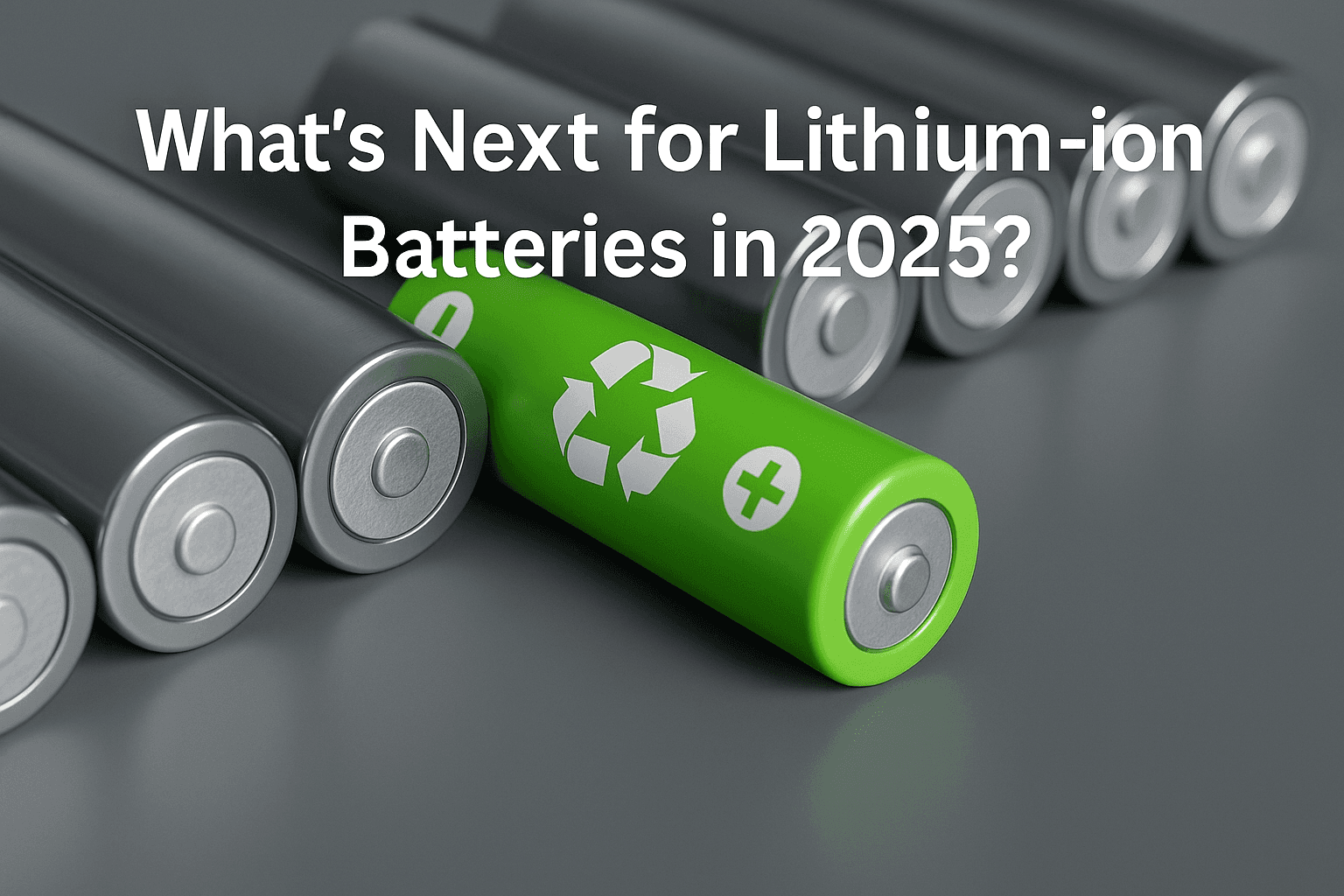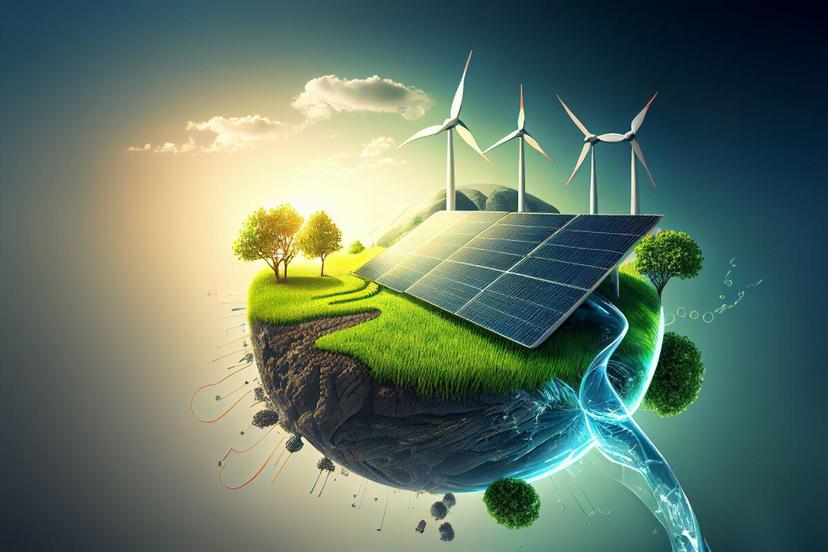June 2025
The Future Is Charged: What's Next for Lithium-ion Batteries in 2025

The global lithium-ion battery market isn’t slowing down anytime soon. In 2024, it stood at $73.16 billion. By 2032, it’s projected to climb to a staggering $283.11 billion. That’s not a gentle incline, it’s a steep ascent driven by how the world is evolving: more digital, more mobile, and more electric.
They’re the technology quietly running behind everything from smartphones to electric vehicle power systems. And the pace of change is only accelerating.
Why the World Keeps Turning to Lithium-Ion
There’s a reason these batteries have become the go-to energy source. They’re compact, fast-charging, and built to last. This makes them ideal for devices we can’t live without smartphones, tablets, laptops, wearables, and more.
As consumer electronics continue to evolve and integrate into daily life, battery performance becomes non-negotiable. People want devices that last longer and charge faster. It’s influencing how batteries are designed, what goes into them, and how they’ll impact the environment long term.
But the applications stretch far beyond your pocket or backpack.
Energy Storage Is No Longer Optional
As more countries build out solar and wind projects, one thing has become clear: clean energy needs strong storage. Lithium-ion batteries make that possible by storing power when the sun is out or the wind is high and releasing it when it’s needed most. That’s what makes renewables reliable, not just promising.
We’re seeing massive deployments of grid-level lithium-ion storage and not just in the West. As their renewable sectors grow, developing economies are making parallel moves to build and energy storage market. These systems help stabilize energy access, prevent outages, and reduce dependence on fossil fuels.
Clean energy is no longer just a promise. With storage in place, it’s starting to deliver at scale. One of the most exciting frontiers in this space is the development of solid-state batteries. Unlike traditional lithium-ion batteries, these use solid electrolytes, which can offer higher energy density, improved safety, and faster charging. Toyota and a few others are already deep into R&D, working to bring solid-state batteries into real-world EVs. If they get it right, it could reset the performance bar across the battery industry. Solid-state batteries won’t replace lithium-ion overnight. But it’s already influencing where the market is headed and how companies plan for the next wave of demand.
Cost Declines Are Changing the Game
Three decades ago, lithium-ion batteries were expensive and limited in use. Today, the cost has dropped by 97%. Between 2014 and 2018 alone, prices were cut in half. Those savings didn’t just make batteries cheaper, they made them scalable.
Falling prices aren’t an accident, they’re the result of years of manufacturing upgrades, battery chemistry changes, and sheer scale. Now, technologies that once felt out of reach are becoming standard, from e-bikes and smart homes to electric fleets and industrial storage. Raw material costs for lithium, cobalt, and nickel still fluctuate, but the overall trend is clear: lithium-ion is becoming economically mainstream.
Policy Support Is Driving Acceleration
Governments are treating battery production as a strategic priority, tying it directly to national security, economic competitiveness, and clean energy goals. The U.S. is investing in reshoring production. Europe is backing battery plants with major subsidies. Together, these moves are redrawing the landscape of global battery production.
In France, a €48 million state-backed initiative is helping Envision AESC build a carbon-neutral lithium-ion battery factory. Beyond manufacturing, they help regions grow their own expertise, workforce, and technology networks. What once supported the industry quietly is now driving it forward.
Asia-Pacific Holds the Production Crown
The Asia-Pacific region continues to lead the lithium-ion supply chain, with China doing most of the heavy lifting. It’s responsible for 80% of global cell output and dominates the production of essential components, from anodes and electrolytes to cathodes and separators.
The region’s dominance stems from its vast manufacturing ecosystem, deep supply chains, and aggressive environmental mandates. Gas-powered scooters are fading out in many Chinese cities, with electric models taking their place and driving up the need for lithium-ion batteries. South Korea, Japan, and Taiwan also play vital roles, especially in high-performance electronics and R&D. For now, the bulk of the world’s battery power, quite literally, is built in Asia.
Electric Vehicles Are Driving Massive Demand
As Electric Vehicle adoption picks up speed, the auto sector has become one of the largest drivers of lithium-ion demand. In 2022, global demand for automotive lithium-ion batteries jumped 65% year-over-year, largely thanks to a surge in EV sales and ongoing EV charging expansion. Passenger cars, commercial fleets, and two-wheelers are all contributing to this spike.
Carmakers are taking bold steps. Both General Motors and Ford have pledged to move toward fully electric or zero-emission fleets by 2035. They’re not only running the engines, they’re shaping how EVs are designed, connected, and upgraded over time. Innovation in the auto world now starts with the battery, not the engine.
Supply Chain Shocks Haven’t Slowed Momentum
COVID-19 disrupted manufacturing worldwide, and lithium-ion battery production was no exception. Lockdowns led to factory shutdowns, labor shortages, and logistical delays. But demand didn’t disappear. In fact, it grew. With more people working from home, the need forportable energy solutions and strong digital infrastructure jumped and batteries became more essential than ever. At the same time, the medical sector ramped up use of battery-powered diagnostic and monitoring tools.
The pandemic made supply chain risks impossible to ignore and reminded us just how much we rely on battery-powered tech. The Russia-Ukraine conflict has added new complexity. Ukraine’s role as a major transit point between Russia and Europe meant that disruptions hit fast, triggering delays and raising logistics costs across the battery supply chain. Even so, the industry has adapted quickly, rerouting shipments and expanding its supplier base.
What’s Next for the Lithium-Ion Market?
Energy storage isn’t a ‘nice to have’ anymore. It’s what will keep systems running as the world electrifies, urbanizes, and digitizes.
This is not just a technology trend. It’s a global transition. And lithium-ion batteries are right at the heart of it.
Want to Explore This Market Further?
Get detailed insights, forecast data, and strategic recommendations in our full lithium-ion battery market report-
https://www.marketsandata.com/industry-reports/lithium-ion-battery-market
Subscribe to our newsletter
Promise we won't spam you.
Share
Read More

May 2025
Faster, Greener, Smarter: Government’s Role in India’s EV Charging Growth
the Indian EV charging station market is set to grow at an impressive CAGR of 25.25% from FY2025 to FY2032, rising from USD 701.29 million in FY2024 to a staggering USD 4247.36 million by FY2032.

July 2024
Unleashing the Power of Renewable Energy: India's Sustainable Future
India, with a population of 1.4 billion, requires a substantial amount of energy to support its rapidly expanding economy. At the time of its Independence, India was a power-deficient country.

December 2023
The Rise of Sustainability in India: Pioneering a Brighter and Greener Future
India, with its vast population and diverse ecosystems, stands at a critical juncture in terms of sustainability.
REACH US



